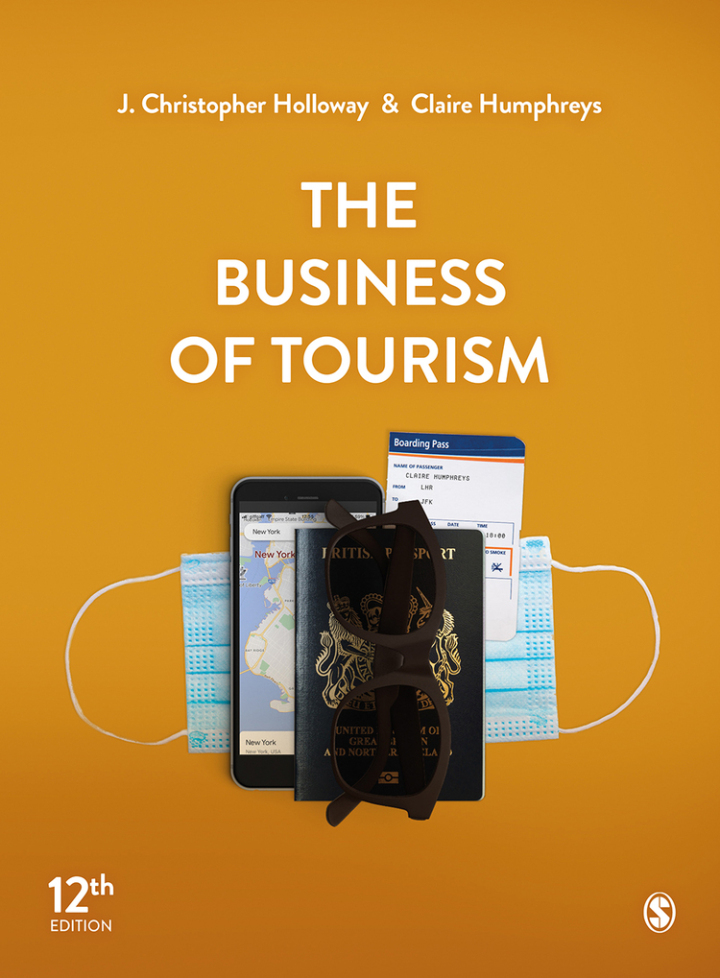
The Business of Tourism 12th Edition
PUBLISHER: Sage
Publisher:Author:eBook ISBN: eBook edition: 1 Year Subscription. Dành cho Cá nhân Trường ĐH, Nhóm, Thư Viện: Gọi 0915920514 để báo giá eBook hosting trên Vital Source hoặc mua Sách In
Kinh doanh du lịchDu lịch là một ngành công nghiệp không ngừng phát triển. Xu hướng và thái độ dễ bị ảnh hưởng bởi những thay đổi về những gì mọi người tìm kiếm trong một kỳ nghỉ, điều này có thể thay đổi trong các bối cảnh kinh tế khác nhau; sự thay đổi thế hệ; bối cảnh chính trị; và gần đây nhất là đại dịch toàn cầu Covid-19. Cuốn sách giáo khoa phổ biến và toàn diện này giúp học sinh không chỉ hiểu những thay đổi này mà còn nghiên cứu chúng với tư duy phê phán và quan điểm lịch sử, mong muốn thành công trong đánh giá. Văn bản này cũng tiếp tục tập trung vào 'kinh doanh' và các khía cạnh hoạt động của du lịch, khiến nó đặc biệt hữu ích cho những sinh viên đang cân nhắc tìm kiếm sự nghiệp và/hoặc vị trí ngắn hạn trong ngành du lịch. Ấn bản thứ 12 này của Kinh doanh Du lịch bao gồm các thông tin cập nhật về những thay đổi đối với ngành du lịch và hành vi tiêu dùng do: Brexit (quyết định rời khỏi Liên minh Châu Âu của Vương quốc Anh) đại dịch và các tác động của nó đối với thiên nhiên; hoạt động của các điểm tham quan; du lịch sự kiện; Chuỗi khách sạn; chuyên chở; và hỗ trợ của chính phủ Tính bền vững và giảm thiểu tác động tiêu cực do du lịch gây ra Chris Holloway từng là Giáo sư Quản lý Du lịch tại Đại học West of England. Claire Humphreys là nguyên Trưởng khoa và Giảng viên chính tại Đại học Westminster.
Online resourcesPreface to the twelfth editionList of abbreviationsPart I Defining and Analysing Tourism and its Impacts1 An introduction to tourismWhy study tourism?Defining tourismThe tourist productThe nature of tourismThe tourist destinationSummaryReferences2 Tourism in its historical contextIntroduction: The origins of travelThe development of travel in the Middle AgesThe development of road transportThe Grand TourAuthorisation to travelOther political hindrances to travelThe development of the spasThe rise of the seaside resortConditions favouring the expansion of travel in the nineteenth centuryThe age of steam: Rail and sea transportOther late nineteenth-century developmentsThe twentieth century and the origins of mass tourismThe growing importance of business travelThe all-inclusive holidayMass-market tourism in its maturityThe influence of information technologySummaryFurther readingReferences3 The demand for tourismIntroductionThe tourist’s needs and wantsTravel motivationTravel facilitatorsSegmenting the tourism marketConsumer processesMaking the decisionFashion and tasteFactors influencing changes in tourist demandThe future pattern of tourist demandSummaryFurther readingReferences4 The economic impacts of tourismIntroductionThe international tourist marketThe value of economic dataThe economic impacts of tourismStatistical measurement of tourismFuture issuesFurther readingWebsitesReferences5 The socio-cultural impacts of tourismIntroductionThe socio-cultural effects of tourismThe hosts’ impacts on touristsCultural transgressionsThe exploitation of indigenous populationsManaging the social impacts of tourismBringing economic benefits to localsThe impacts of travel on tourists’ healthPolitico-cultural impactsLegislation and guidance protecting the tourist destinationSummaryFurther readingWebsitesReferences6 The environmental impacts of tourismIntroductionThe environmental effects of tourismPublic-sector planning for control and conservationThe public-/private-sector interface in the development of sustainable tourismSummaryFurther readingWebsitesReferencesPart II The Travel and Tourism Product7 The structure and organisation of the travel and tourism industryIntroductionThe chain of distribution for tourismCommon interest organisationsIntegration in the tourism industrySummaryWebsitesReferences8 Tourist destinationsIntroduction: What defines a destination?Categorising destinationsCoastal tourismUrban tourismRural tourismThe successful destinationDesign of the built and natural environmentThe media and their influence on tourist destinationsDestinations of the futureSummaryWebsiteReferences9 Tourist attractionsIntroductionHistoric buildings and heritageMuseums and art galleriesParks and gardensOther attractionsOther influential factors attracting visitorsThe scope for innovative tourismSummaryFurther readingWebsitesReferences10 Event tourismIntroduction: Defining event tourismForms of event tourismDeveloping event tourism strategiesThe future of event tourismSummaryWebsitesReferences11 Business tourismIntroductionMeetingsExhibitions and trade fairsIncentive travelIndividual business travelTrends in business tourismSummaryWebsitesReferences12 The hospitality sector: Accommodation and catering servicesIntroductionThe structure of the accommodation sectorClassifying and grading accommodationThe nature of demand for accommodation facilitiesCategories of accommodationThe distribution of accommodationEnvironmental issuesCateringFuture developments in the hospitality sectorWebsitesReferences13 Tourist transport by airIntroductionThe airline businessThe organisation of air transportAir transport regulationThe deregulation of air transportThe economics of airline operationEnvironmental concernsThe marketing of air servicesWhat is the future for air transport?WebsitesReferences14 Tourist transport by waterIntroductionThe ocean linersCruisingFerry servicesCoastal and inland waterways tourismSeagoing pleasure craftWhat does the future hold for water transport?Further readingWebsitesReferences15 Tourist transport on landIntroductionThe role of the railways in tourismCoach travelThe private carCycling and tourismTourists on footFuture developments in land transportReferencesPart III Intermediaries in the Provision of Travel and Tourism Services16 The management of visitorsIntroductionControlling the impacts of visitorsMeeting the cost of visitor managementOperational approaches to visitor managementTechnology that can assist in visitor managementFuture issuesFurther readingWebsitesReferences17 The structure and role of the public sector in tourismIntroductionThe nature of government involvementPlanning and facilitating tourismSupervision and control of tourismThe organisation of public-sector tourismPublic-/private-sector cooperationTown twinning and tourismThe role of the European UnionThe future role of the public sector in tourismSummaryWebsitesReferences18 Tour operatingIntroductionTour operators: Why a European perspective?The role of the tour operatorTour operating within EuropeThe changing marketplace in tour operatingThe nature of tour operatingPlanning and marketing of package toursThe role of the resort representativePricing the package tourThe tour brochureThe reservations systemOperators selling directThe information technology revolution and its impact on tour operatingThe future for tour operatorsWebsitesReferences19 Selling and distributing travel and tourismIntroductionHistorical contextThe scale of the retail sectorThe power of the travel agency chainsThe profitability of travel agentsThe role of travel agentsDistribution trendsSetting up and running a travel agencyTravel agency appointmentsThe impact of computer technologyThe future of travel retailingWebsitesReferences20 Ancillary tourism servicesIntroductionServices to the touristServices to the supplierMarketing servicesTechnical servicesThe future of ancillary servicesWebsitesReferencesIndex















